Photos: This Plant-Eating Dinosaur Had Spikes, Armor and Camouflage
Colorful critter
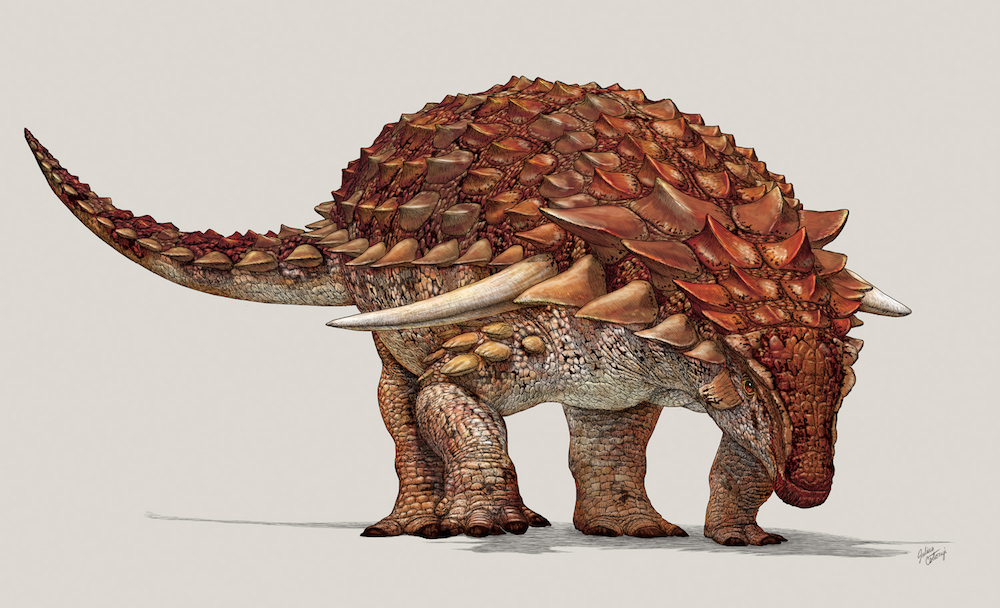
The 110-million-year-old dinosaur, a nodosaur — a relative of the ankylosaur — was covered in spiky, bony plates known as osteoderms, but it had another trick to protect itself from predators: camouflage.
A geochemical analysis of a black film covering the amazing, statue-like nodosaur specimen, a newly named genus and species dubbed Borealopelta markmitchelli, revealed that the beast was brownish-red in color.
Intriguingly, the nodosaur was darker on its back than its belly, suggesting it had countershading, a type of camouflage that many animals still use today. [ Read the Full Story on the Nodosaur Dinosaur's Discovery and Camouflage]
Nodosaur sideview
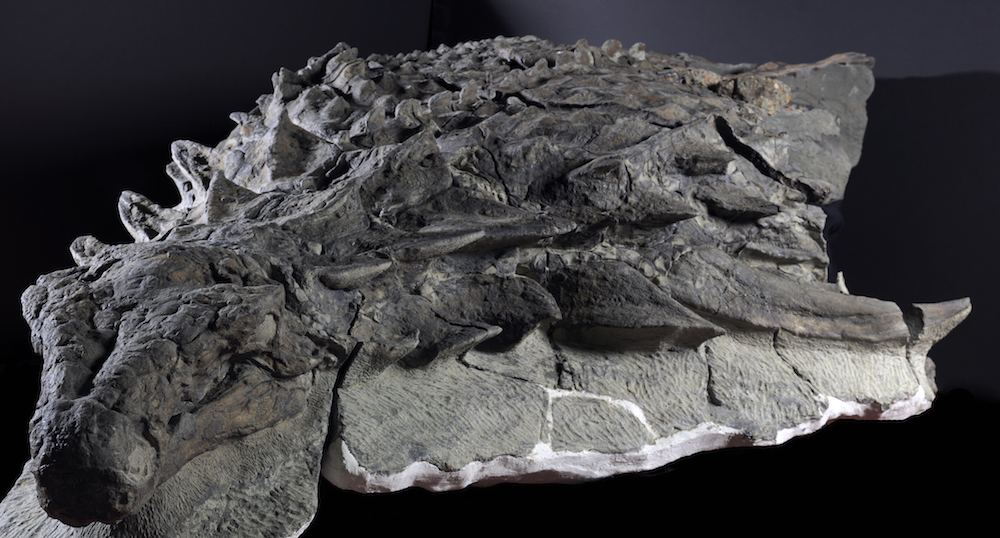
A side view of the stupendously spiky nodosaur fossil.
Nodosaur head
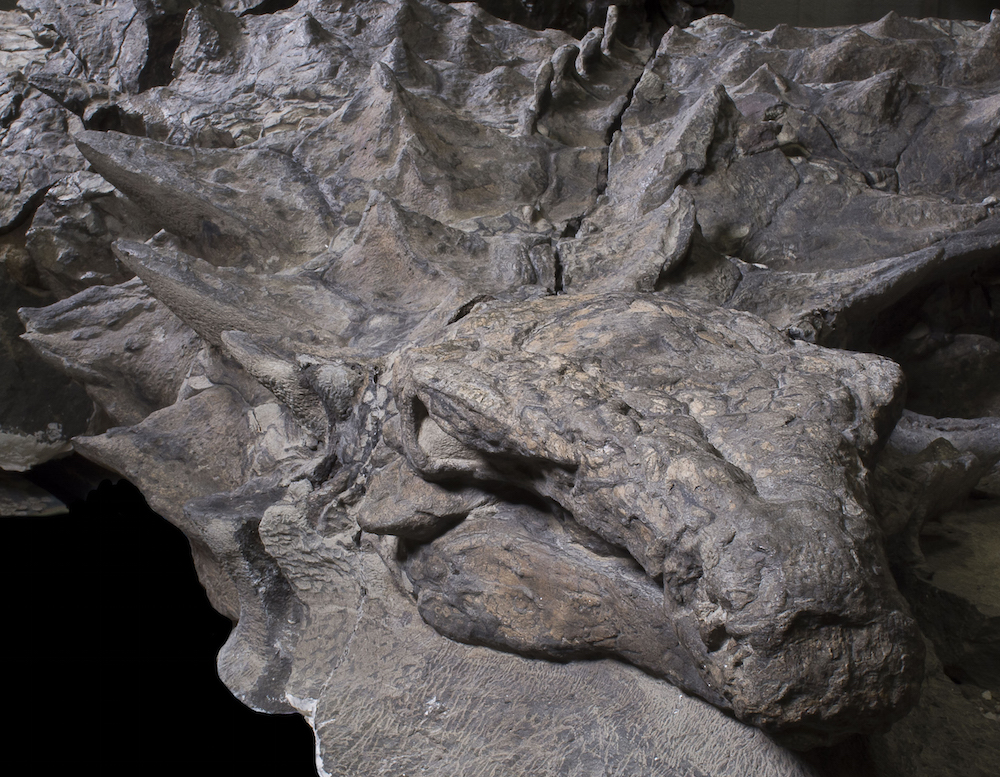
The nodosaur's fossilized head.
Nodosaur spikes
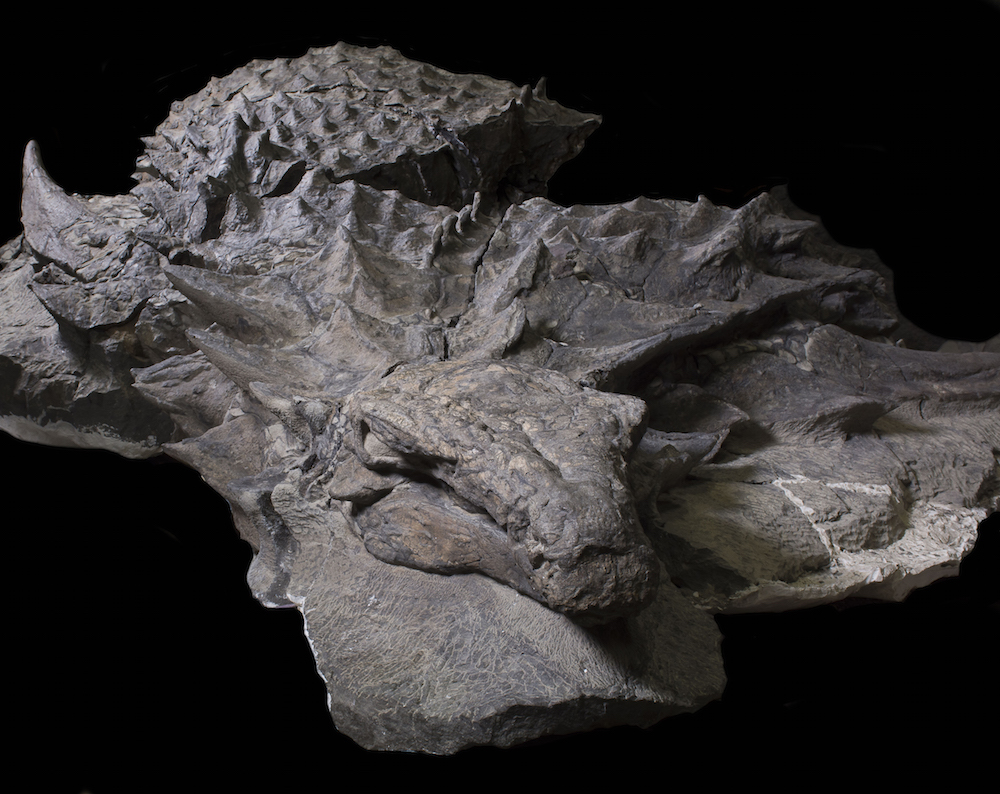
The herbivorous nodosaur was covered with protective, bony spikes.
Prep time
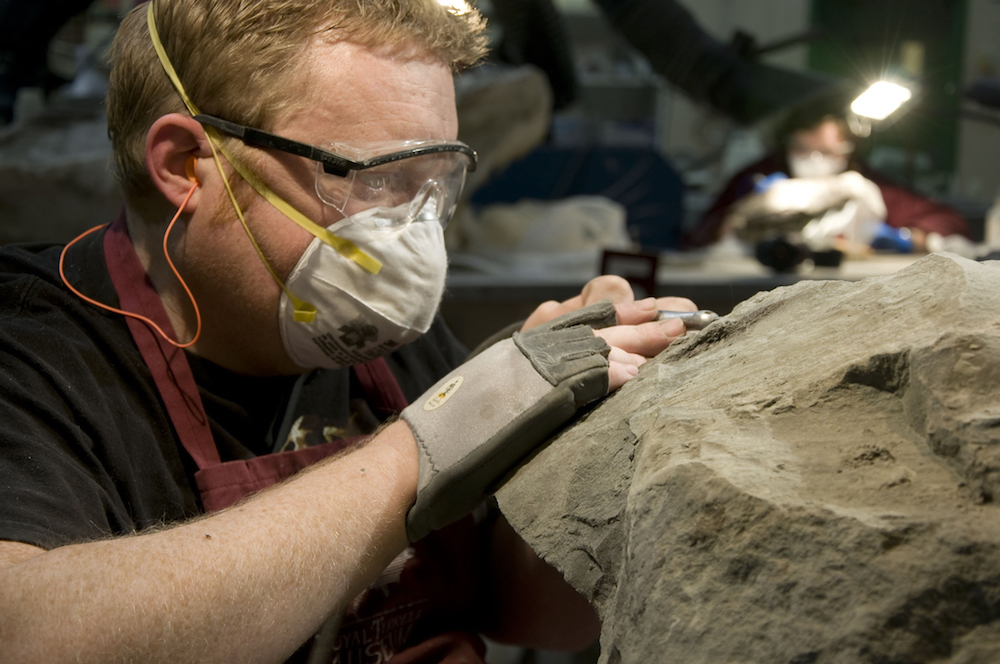
Mark Mitchell chisels off the surrounding rock from the nodosaur fossil.
Bird's-eye view
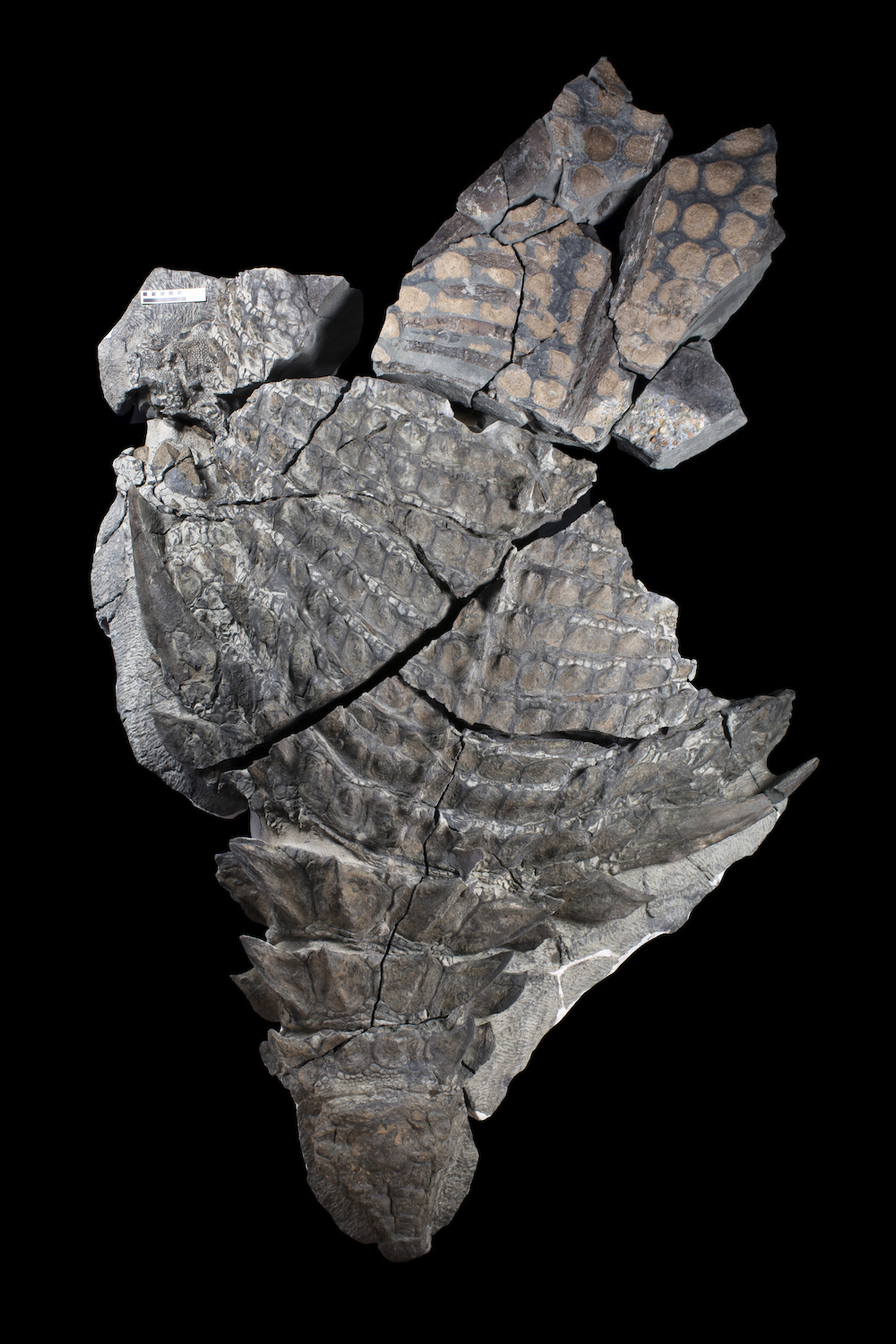
A bird's-eye view of the nodosaur's back.
Long dino
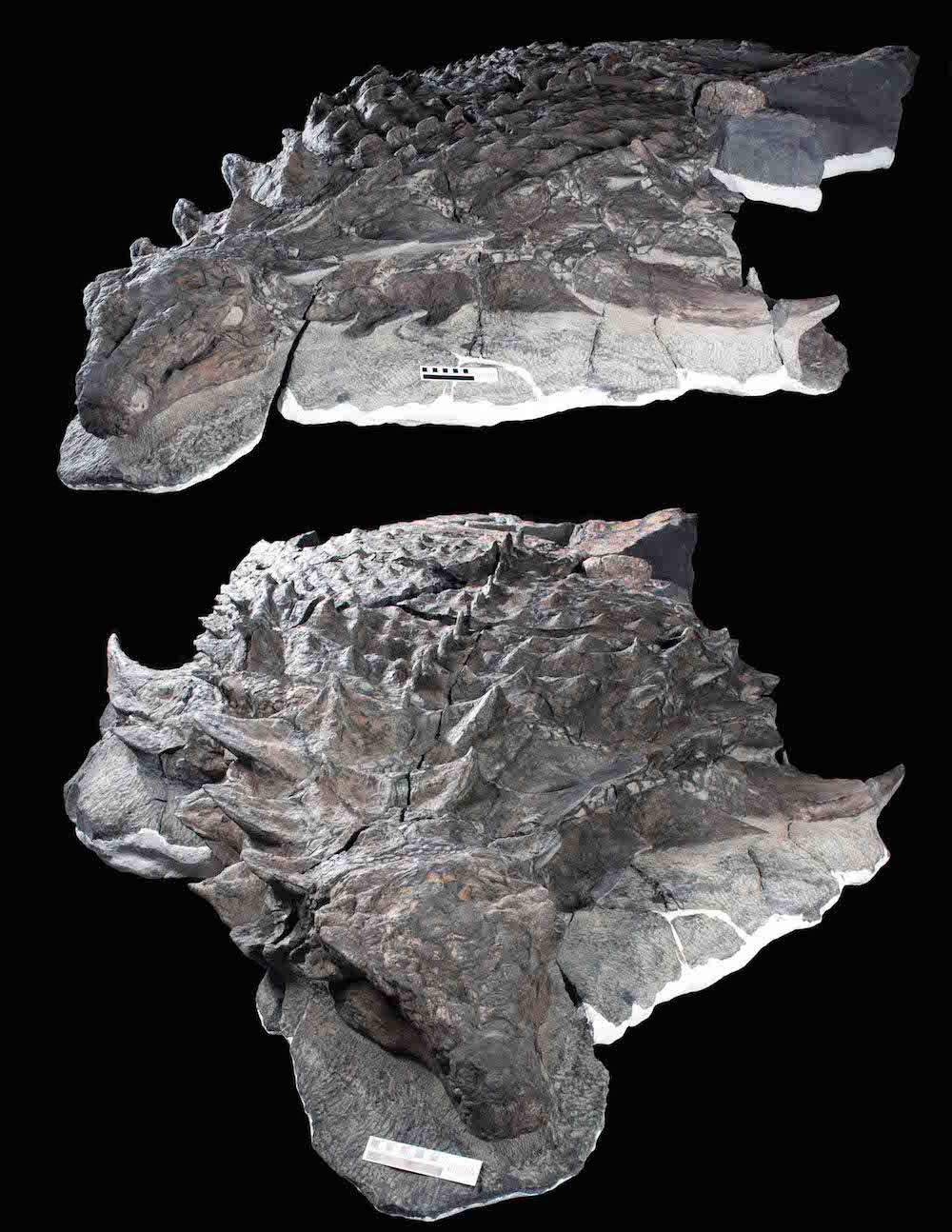
During its lifetime 110 million years ago, the nodosaur measured 18 feet (5.5 meters) long.
Sign up for the Live Science daily newsletter now
Get the world’s most fascinating discoveries delivered straight to your inbox.
Head and neck
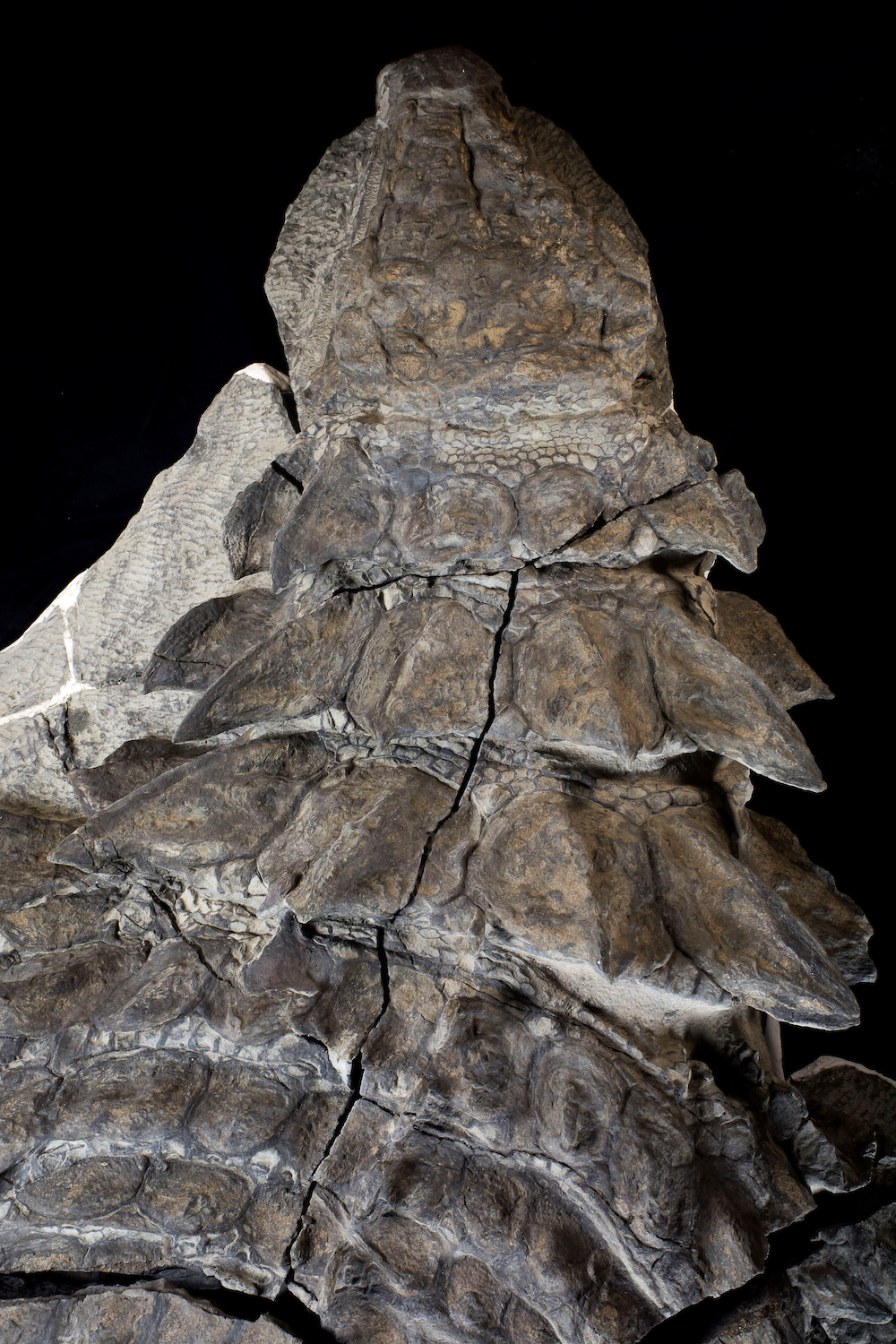
The geochemical analysis found that the nodosaur had more pigment on its back, including on its head and neck, than on its underbelly.
Left side
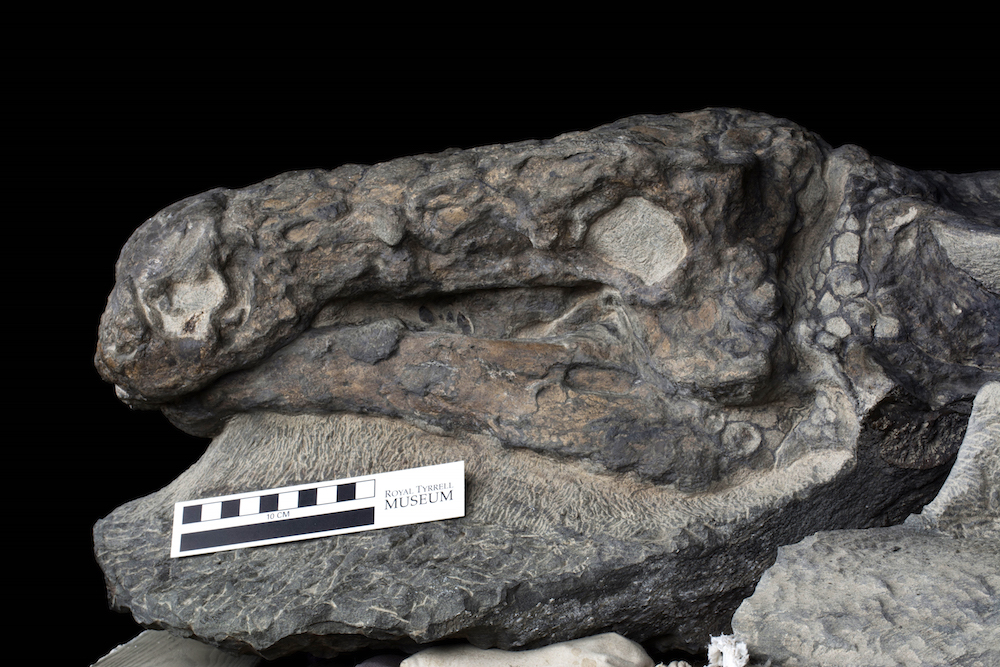
The left side of the nodosaur's head. Notice the black film that covers the fossil. It contains organic remnants of the dinosaur's skin and pigment.
Nodosaur imagined
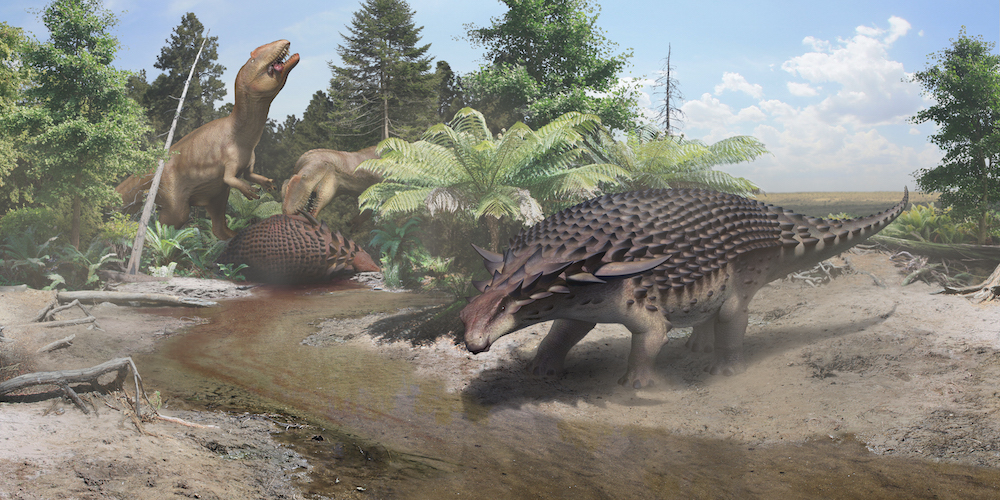
The nodosaur Borealopelta markmitchelli had armor, spikes and camouflage, but it likely still fell prey to larger beasts, such as the tyrannosaur Acrocanthosaurus.
Sacral skin
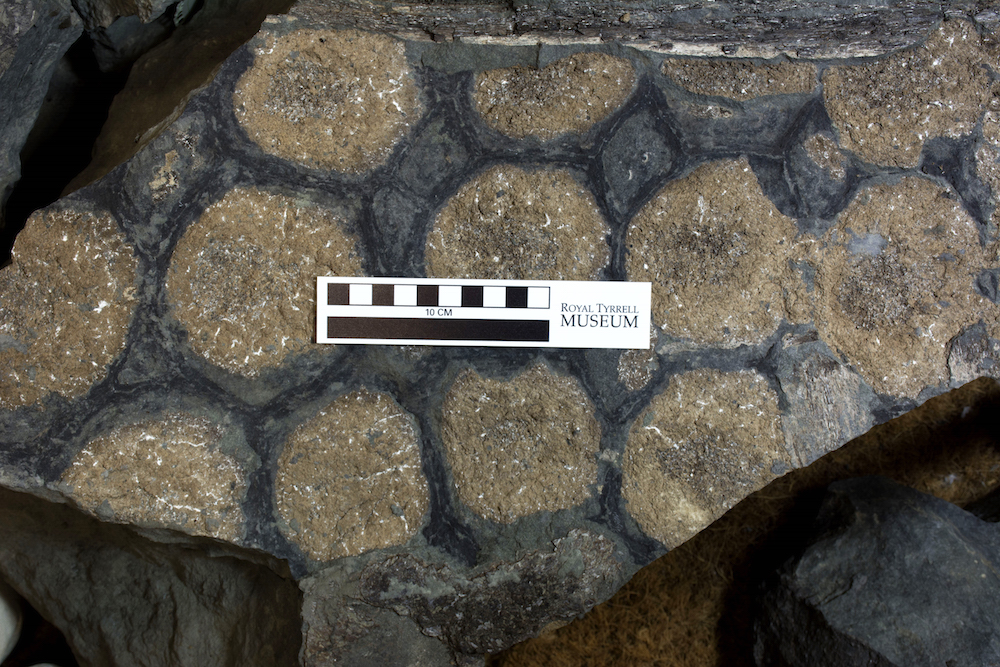
Fossilized skin and osteoderms from the nodosaur's lower back. The dark skin impressions are the remains of the reddish-brown melanin, known as pheomelanin.

Laura is the archaeology and Life's Little Mysteries editor at Live Science. She also reports on general science, including paleontology. Her work has appeared in The New York Times, Scholastic, Popular Science and Spectrum, a site on autism research. She has won multiple awards from the Society of Professional Journalists and the Washington Newspaper Publishers Association for her reporting at a weekly newspaper near Seattle. Laura holds a bachelor's degree in English literature and psychology from Washington University in St. Louis and a master's degree in science writing from NYU.










